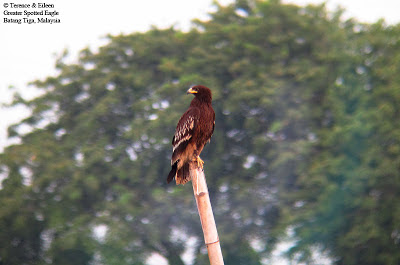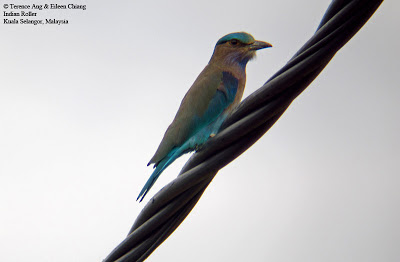Understanding Aquila - Greater Spotted Eagle (Part 1)
It been a while people have been asking me, I ask myself and me asking expert about this question. Going through tons of reference don't really help either when different author have different perception and how the placed the name in. Today in this topic for part one we will look into the type of variation and also number of plumage to age in Greater spotted eagle-however how to identified each will come in later chapter-.
So how many variation do we have?
In all we have 3 different variation well noted and all three occur and have been observed here in Peninsula Malaysia. They are:
My classification : also know in other text
Dark Variation Normal morph, typical juvenile, classic, traditional plumage
Imtermediate variation Bleech individual, pale morph,
Pale variation Fulvescen
The most interesting about this is that most of this variation is only crucial in juvenile age. In Malaysia where the ratio of juvenile to adult bird is currently almost 9:1 we should put more care when identifying all the juvenile plumage.
Ages of the GSE has also well noted here. All 5 plumages have been well seen and documented in various location. Each of this plumages represent one year.
1st plumage - 1st cal year
2nd plumage - 2 cal year
and so on till the 5th plumages and adult.
In our current knowledge in Malaysia all 3 morph mention earlier are documented in the 1st - 3rd plumage. This make us require to think right now at least 11 different plumages when identifying just the GSE alone. Special care should be noted when dealing with different variation. As far as im concern, dark variation is still the commonest in Peninsula Malaysia over the other 2. There is only 2 pale variation record in Peninsula Malaysia and less common but noted in all site as well is the Intermediate variation.
Here end of part one as introduction to GSE. May this assist you all in field to avoid confusion. Stay tune for part 2 and the other part to come including telling them apart in field.
So how many variation do we have?
In all we have 3 different variation well noted and all three occur and have been observed here in Peninsula Malaysia. They are:
My classification : also know in other text
Dark Variation Normal morph, typical juvenile, classic, traditional plumage
Imtermediate variation Bleech individual, pale morph,
Pale variation Fulvescen
The most interesting about this is that most of this variation is only crucial in juvenile age. In Malaysia where the ratio of juvenile to adult bird is currently almost 9:1 we should put more care when identifying all the juvenile plumage.
Ages of the GSE has also well noted here. All 5 plumages have been well seen and documented in various location. Each of this plumages represent one year.
1st plumage - 1st cal year
2nd plumage - 2 cal year
and so on till the 5th plumages and adult.
In our current knowledge in Malaysia all 3 morph mention earlier are documented in the 1st - 3rd plumage. This make us require to think right now at least 11 different plumages when identifying just the GSE alone. Special care should be noted when dealing with different variation. As far as im concern, dark variation is still the commonest in Peninsula Malaysia over the other 2. There is only 2 pale variation record in Peninsula Malaysia and less common but noted in all site as well is the Intermediate variation.
Here end of part one as introduction to GSE. May this assist you all in field to avoid confusion. Stay tune for part 2 and the other part to come including telling them apart in field.







Nice notes..... Will look forward for future parts, to prepare myself for Aquila identification next year.... hehehe
ReplyDeletean eye opener. does the 5 plumages refer to the amount of years a fledging becomes an adult?
ReplyDeleteYes. 5th plumage always refer to adult plumage as well. Remaining will show their ages from each year till they become 5th. Once adult you cant age them anymore, but you can for juvenile.
Delete